We turn onto the gas company improved access road and head into one of Pennsylvania’s many tracts of public state forest land. Our SUV bounces and clatters along through dense stands of mixed deciduous and evergreen forest, gravel from the road kicking up into the truck’s undercarriage. Thanks to the condition of the road, which is without question the most well-maintained state forest access road I’ve ever ventured along, we’re able to carry on at a brisk pace. Nevertheless, we continue on into the forest for 10 or 15 minutes before we reach our destination, an Anadarko natural gas well pad in Pennsylvania’s Pine Creek Valley. From those of us who haven’t previously seen first hand the real-world impacts of gas drilling in the Marcellus Shale region of Pennsylvania, there’s a collective, palpable sense of awe, though for altogether unexpected reasons.
As an angler and a conservationist, environmentalist or any other label I might choose to identify myself as someone who puts a great deal of value on preserving and protecting wild and natural places, especially wild and natural waters, there are a myriad of reasons to be concerned about the potential impacts of hydraulic fracturing (aka “fracking”) on these places. The typical reflex is to contemplate the sensational: overturned trucks carrying fracking wastewater, mountain creeks drawn dry by unregulated industry water withdrawal, pristine streams choked by out-of-control sediment resulting from erosion of disturbed forest parcels and so on. And, while all of these threats are real, and have occurred in Pennsylvania to some extent or another, what I encounter when we arrive is in stark contrast to these horror stories.
Instead, as the forest cover breaks and we come upon the first of many sites we’ll visit that day, I am greeted by what is — at least as far as appearances go — the first in a series of immaculately maintained facilities. Signage, identifying the responsible company, potential dangers and other details, is extensive and easy to understand. Pipelines, as they emerge from underground, are rust free and cleanly painted. Well pads are seemingly perfectly flat and level, with nary a stray rock where their edges meet the neatly groomed grass that buffers the pad from the forest stands that surround them. Even the site we visit where drilling is actively underway, which is in considerably more disarray, is better than expected. It is, for lack of a better term, a pleasant surprise.

Yet, despite my initial sense of relief, any developing notion of “hey, this ain’t so bad” is almost immediately replaced by “good lord, this shit is huge.” And I’m not alone. Several others who hadn’t previously seen a fracking well pad are also taken aback. Once we’ve moved on and seen first-hand not only well pads, but a compressor station, fluid storage tanks and several water impoundment ponds (both fresh and produced water), the reality sets in that the scale of what is going on in the woods of Pennsylvania is hard to imagine until you’ve witnessed it with your own eyes and is probably widely unknown to most people who would likely care about it.
This is, again, deep in the woods of Pennsylvania. Pine Creek Valley is one of the most remote areas of the state, known for its large areas of relatively undisturbed wilderness.

Pristine mountain streams with healthy wild trout populations — such as Slate Run and Cedar Run — course through the valley and wind their way into Pine Creek, which itself is known as one of the state’s premier trout fisheries and recreational waterways. Hunters frequent the valley’s state forest and state game lands in search of deer, turkey and other game. Birders travel long distances to spy the numerous bald eagles which call these woods home. Less than 40 miles away, the largest herd of elk (yes, elk) east of the Mississippi roams freely. Over four hours from Philadelphia and equally as far from Pittsburgh, this is not the suburbs. This is the middle of nowhere.

The average well pad, which may contain up to a dozen well heads, is 4 square acres. That is roughly the size of a Wal-Mart parking lot. The footprint of the sites we visit with fluid storage tanks dwarf the well pads, and the compressor station feels nothing short of a small town of humming and grinding equipment.
The first water impoundment pond (“pond” being a misnomer which should more aptly be replaced with “lake”) we encounter is so large that I can’t fit it into a single frame using the widest angle lens in my camera bag, and is filled with fracking wastewater, the fences containing it adorned with “no smoking” signs due to the contents of the pond.

And yet we're far into otherwise undisturbed forest, miles from the nearest paved road.
Of course it no longer feels like it. Any sense of being in the wilderness has been removed by the clamoring of equipment and hum of electricity. The forest canopy that would otherwise serve to prevent our own knowledge of being on a ridge top is gone, pushed far back by the clear cutting that preceded development of these sites. Despite the clean and well-maintained nature of all the sites we visit, these areas are — unquestionably — developed.
In two days time we make our way to a handful of well pads and their accompanying infrastructure (the aforementioned compressor station and fluid storage tanks, an unknown number of criss-crossing pipelines and two water impoundment ponds). The breadth of all of it remains hard to believe. When I try to take in that the handful of wells I visited are just miniscule fraction of the more than 7,000 wells that have been drilled in Pennsylvania and the associated infrastructure that accompanies them, the scale becomes almost incomprehensible. Add in the fact that it has been estimated that up to 50,000 wells could be drilled in the Marcellus Shale formation in Pennsylvania by the time it is built out, and I no longer know what we’re talking about.
Weeks later what sticks with me is my ignorance. Not only about the scale of shale drilling, but my perceptions of what the typical drilling site would reveal when seen first hand. The people of Pine Creek Valley, several of which described undisturbed forest land and clean rivers as “a matter of local pride”, lack my prior ignorance as they see the impacts of gas development on an ongoing basis.

Yet, despite their reverence for natural places and even with the boom of gas development in Pine Creek Valley now years behind them — once always-full hotels and motels are lush with vacancies, previously hard-to-find tables at the few restaurants that serve breakfast are readily available, and the local roadways that were formerly overwhelmed with countless semi-trucks hauling loads water, gravel and other materials (approximately 1200 truckloads of material are required for every well pad) have quieted down — opinions on gas drilling are mixed.
During a conversation about the waters of Slate Run and Pine Creek with Slate Run Tackle owner Tom Finkbeiner, when asked to identify the biggest impact he’s seen from gas development, Tom responded “young people with more money to spend on expensive rods and gear, because now they’ve got good jobs.” And although he was careful to point out that he feels gas development “can’t happen everywhere” and must be monitored and undertaken with great care, the impact of his answer — even if it was partially tongue-in-cheek — can’t be dismissed when you consider that this is a man whose livelihood is entirely dependent on the health of the local streams and rivers.
The fact is that development in Pennsylvania’s Marcellus Shale region, as well as the Marcellus Shale region of other states such as New York, is a considerably complex issue. In areas which historically lack economic development, sources of wealth, jobs and tax revenue are often welcomed with open arms. Haste to welcome these developments can often lead to serious and long-reaching consequences. Still, the hope for these regions is that there is a way to do things right, a way to have it all. If there is, they key to getting there will be pragmatism. And pragmatism doesn’t come without knowledge. And patience.

Unfortunately, the reality for Pennsylvania is that much of the development of the gas industry that’s occurred thus far has done so without either of these things. And, while there’s a definite sense that things are getting better and that some of the gas companies are trying harder to do the right thing, there’s also the feeling that these companies aren’t likely to do anything they’re not mandated or pressured to do. The truth is that the companies that have and continue to drill in Pennsylvania’s Marcellus Shale region have done a lot of learning on the job. Learning, as it often is done, from mistakes. Some of them big ones.
As someone who thinks of myself as — or at least wants to think of myself as — a steward of wild places, I realize I haven’t been doing my job. Despite my efforts to stay informed about development in my state’s Marcellus Shale region, I haven’t been doing enough. If I had been, perhaps I wouldn’t have been so uninformed about some of the realities of shale gas drilling. I would have had more knowledge.
As anglers, we are part of a very large, motivated and powerful demographic. And, as a result of the fact that what we love is dependent on the preservation and protection of wild places and clean, natural waters, we have an obligation — at the very least to ourselves — to watch over them. As such, we must understand the threats these places face by learning about them, by being voracious about the information readily available to us, by seeking out what isn’t and by sharing it with other anglers.

Those of us who fish have what is a potentially loud voice that has, thus far, remained startlingly quiet regarding what role the natural gas industry should play in the future of the wild and natural places we hold dear. It is high time we educate ourselves about what is facing us, formulate a cohesive opinion of how we feel this moving force should co-exist with our rivers and streams — and the lands that feed them — and speak up. The potential price of remaining ignorant, silent or both is simply too high.




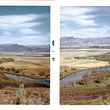



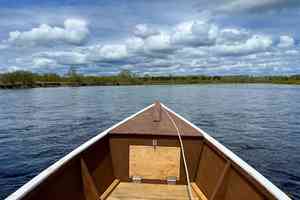


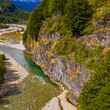
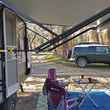
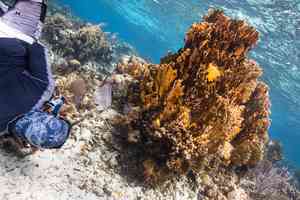

















Comments
AKGuide replied on Permalink
We face a different set of threats from the fossil fuel industry in AK. Thankfully these threats are often large and easier to identify. Fracking seems like one of those things that's coming in small doses, cutting holes in the wilderness like swiss cheese. I don't envy Pennsylvania's situation.
Donna replied on Permalink
The point of the author is that it is NOT like Swiss cheese. Or that it's like Swiss cheese with really big holes. Great article. Well balanced. Great read.
Jack Thomas replied on Permalink
Well written, balanced article. Prompted me to research and learn more about 'fracking'. Such a beautiful part of the country. Hate to see it compromised in any way, but it seems that the impact of fracking, while substantial, may be controllable and sustainable. Time will tell.
backcountry replied on Permalink
You are right that we have not paid enough attention to the new energy development boom. I suggest taking a look at satellite images of these developments to get an idea of the scale.
Energy development is also rampant here in the Inter-mountain West. You mentioned 7,000 sites in Penn. Five years ago, we had 10,000 four acre pads planned for development.
I hear sportsmen that say "drill away" until gas is back to $1.50 and others that like the access provided by new roads that are cut into roadless areas.
There are so many new gas/oil pads, that I stopped hunting at one of my favorite elk sites. Not because elk are not there, but because it is too ugly and noisy. The area no longer provides the experience I want.
As a new fly fisherman, I have started thinking about what is required to sustain cold, clear streams. Since the development has already begun, we can only hope there are no accidents near our streams. What are the chances of that?
howardfine13 replied on Permalink
I am one of those "young people" mentioned in the article who has been able to enjoy the sport of fly fishing because of my job in the Marcellus shale. I am a PA native, born and raised, as well as a Geologist for a drilling company. I am incredibly grateful for being able to get a great job out of college and to spend my free time and money playing in the Wilds of PA. For me, the shale gas has brought a lifeline to an otherwise dismal economy.
The article is correct that the public needs to get more informed about the drilling and frac'ing process. Companies hold town hall meetings and they attend various public outreach programs. Get involved in these meetings, ask questions.
I won't lie, there are some companies that haven't done things right. They have been disciplined for their actions and have made steps to remedy possible future mistakes. Know who these companies are. Don't hate them for their past mistakes, but be mindful of them. We all have enjoyed paying $3.00 an MCF to heat our homes and make our food. For me, this has meant more time on the river, more gas money to drive to my favorite hole, and more fly lines and flies at the local fly shop.
I know that there are some people who are absolutely set in their ways and they will hate the industry no matter what. I don't waste my time talking to those people. They don't want to hear the science behind frac'ing and drilling, they would rather scream at me. But to the people who have an open mind, just please understand what the industry has brought to us in PA and make sure you stay informed on the environmental side of things as well. It usually takes some digging to find the good, because the media doesn't report it, but it isn't too hard to find the bad. Just be mindful of both sides.
http://fracfocus.org/
http://onlinelibrary.wiley.com/doi/10.1111/gwat.12056/full
Kfuller2209 replied on Permalink
My goodness is it refreshing to hear someone with the same story as me. And in a well written format I may add. The drilling and frac'ing has given me an amazing job 6 months out of college. And we, the industry, have made mistakes but we are working to fix them. If people want to bash us thats fine. But keep in mind when you turn your thermostat up in the winter, drive your car, or use any plastic product, you can thank us.
Dan Ferrell replied on Permalink
As an avid angler, I say there should be a statewide moratorium on it, similar to NY, and, other states, until it can be done safe....until independent health impact studies are completed, until we understand what pumping hundreds of thousands of chemicals under our forests and creeks will mean down the road......until the industry figure out how to make a casing that doesn't fail, after all, 1 out of 20 fail right off the bat, and, 30% of casings fail within 30 years, according to their own research...it's a well known problem in the industry...that alone is good enough reason to stop it right now....30% of thousands of wells, is not a small number of casing failures.....and, the toxic chemical cocktail they are pumping under tremendous pressure down them wells, will have plenty of escape routes not to long down the road....along with naturally occurring stuff, methane , radioactivity, etc.....we have already planted thousands of ticking time bombs, shouldn't we stop before we dig the hole deeper? The industry got the Halliburton Loophole into the 2005 Energy Act, what has that created? They won't let the public know EXACTLY what chemicals they use, they call it proprietary......but, you can read the ingredients for a Coke, and, their formula is proprietary too....I don't buy it, something sets off alarms with that.....Why hide what they are pumping by the bagillions of gallons under our most sensitive forests, streams, lakes, schools, farms, homes.....? I think it's because if people knew, they would oppose it vigourously......I have done tons of research too, and, what I have found is it's not safe right now.....clearly....the risks are toooo high....the first hand accounts just from citizens of PA are enough to convince me, but, then you add the voices from places they have already fracked up, like Dish, Texas, Pavillion, Wyoming, Colorado, N. Dakota, and, on and on, and all the stories are consistent, so, not like they will all of a sudden change their ways....they won't unless they are REQUIRED to, period...go to a website, think its called the "List of the Harmed", it's over 6000 long now, with many from PA.....read their stories, listen to their own words, you can find them on Youtube too, and , judge their voracity for yourself..the industry will try to brush them off, try to marginalize them, but, all I ask is , listen to them yourselves, and, make your own mind up.....there has already been water contamination across PA....that's fact....30% of casings are going to fail, that's proven in an industry study......they use carcinogenic, highly toxic chemicals , and, tons of them, per well, per frack.....I say, you better catch up on your research, before it's too late....In my opinion, I think if we can put a man on the moon, they can figure out completely biodegradable frack fluids, that are 100% non toxic....they can come up with closed loop systems that capture all the emissions, which are substantial, VOC's are nasty things to have wafting through our pristine state forests, let alone near your kids....Benzene is very prevalent, and, it causes cancer....they can figure out how to capture all that, they just don't , since they don't HAVE to ..... with a moratorium they could put some engineers to work, create some jobs getting it right, before they can come back in.....when they have to use 10 million gallons of good , fresh, PA water, to frack one well , one time...and, have to take the waste fluid too Ohio to inject a mile down , since its so contaminated , it can't be treated, that should tell you something....that's unsustainable..that's water that never returns to the water cycle, ever...it's forever poisoned...and, each well can be fracked many , many times, and, is.....If they can't do it safe, they shouldn't do it at all...especially in our most precious forests ....let alone anywhere near our kids.....that's my opinion, go do your own research, and, come up with your own....but, don't do nothing, this is too important...generations coming depending on us today...
Jack Wolf replied on Permalink
Just wait until the impacts of climate change really kick in. Our forests are kindling at this point. Tree mortality is widely visible in this state and others. Oil and gas interests are merely adding insult to injury.
Pages